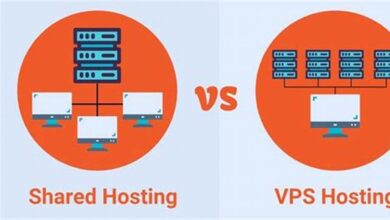Top 10 Tips for Optimizing Your Server

Hey there! So, you’ve got a server up and running, but it’s not performing quite as well as you’d like? No worries—we’re here to help. In this guide, we’ll dive into practical, actionable tips to optimize your server for better speed, efficiency, and reliability.
10 Tips for Optimizing Your Server

Whether you’re a beginner or a seasoned sysadmin, these tips will give your server the boost it deserves.
1. Keep Your Software Updated
First things first: always keep your server’s software up to date. This includes the operating system, web server, databases, and any other tools running on your server. Updates not only improve performance but also patch security vulnerabilities.
- Why It Matters: Outdated software is one of the easiest ways for hackers to exploit your system, and it can also slow down your server.
- Pro Tip: Automate minor updates to save time but always manually review major updates to ensure compatibility.
2. Monitor Server Performance Regularly
You can’t fix what you don’t know is broken. Regular monitoring is key to identifying bottlenecks and potential issues before they snowball into major problems.
- Tools to Try: Use Nagios or Zabbix for server monitoring. For beginners, try New Relic for a more user-friendly experience.
- Metrics to Watch: Track CPU usage, RAM consumption, disk I/O, and network activity to ensure your server isn’t overburdened.
3. Optimize Your Database
Databases are often a server’s most resource-hungry component. Optimizing them can make a noticeable difference in your server’s performance.
- Indexing: Ensure your tables are indexed for faster query performance.
- Maintenance: Run regular cleanup tasks to remove redundant data and optimize storage.
- Caching Queries: Use tools like Redis or Memcached to cache frequently accessed data and reduce database load.
4. Implement Caching
Caching is a game-changer when it comes to reducing server load and improving website performance. By storing frequently accessed data temporarily, caching eliminates the need to repeatedly regenerate content or fetch data from databases.
Types of Caching
- Object Caching:
- Stores the results of database queries, API calls, or other expensive operations in memory.
- Tools: Redis and Memcached are the most popular options for object caching.
- Page Caching:
- Saves fully rendered pages so they can be served quickly to visitors without generating them again.
- Example: WordPress caching plugins like W3 Total Cache or WP Rocket work wonders here.
Read also: The Ultimate Guide to Hosting Migration: Moving Your Website Without the Headaches
Real-World Case Study: How I Use Redis and Memcached
In every server or hosting environment I manage, I implement both Redis and Memcached for caching. Here’s why:
- Redis: It’s highly versatile, supports advanced data types, and can handle persistent data storage. I use it to cache session data and database queries.
- Memcached: I rely on Memcached for ultra-fast object caching. Its simplicity and speed make it ideal for reducing database load in high-traffic environments.
Why Caching Matters
- Reduced Load: Caching offloads processing from the server, reducing stress on the CPU and RAM.
- Faster User Experience: Cached content is served almost instantly, ensuring a smoother experience for visitors.
- Improved SEO: Faster load times improve your site’s SEO ranking, as Google prioritizes speed.
5. Use a Content Delivery Network (CDN)
A CDN is like having a network of “mini-servers” strategically placed across the globe. It stores and serves your website’s static content—like images, CSS, and JavaScript—from servers closest to your users, dramatically reducing load times.
Benefits of a CDN
- Reduced Latency: Users access your site from the nearest CDN server, reducing the time it takes for content to load.
- Load Balancing: Distributes traffic across multiple servers, reducing the load on your primary server.
- Enhanced Security: Many CDNs (like Cloudflare) offer additional security features like DDoS protection and bot filtering.
Real-World Case Study: Cloudflare for My Clients and Myself
At jack.web.id, I use Cloudflare for all my clients’ websites and my own. Here’s why I love it:
- Ease of Use: Cloudflare is super user-friendly, making it perfect for beginners who might feel intimidated by server management.
- Performance Boost: By serving static assets from their global edge network, Cloudflare reduces load times significantly.
- Security: With built-in features like SSL, firewall rules, and bot protection, Cloudflare ensures my clients’ websites stay secure.
Why Cloudflare Stands Out
- Free Plan: Their free plan is feature-rich and perfect for new websites.
- Quick Setup: With just a few clicks, you can integrate Cloudflare with your hosting.
- Analytics: Their dashboard provides clear insights into your site’s performance and threats.
6. Optimize Your Web Server Configuration
Your web server (like Apache or Nginx) is the backbone of your hosting setup. A few tweaks can significantly improve its performance:
- For Apache Users:
- Enable
mod_deflatefor compression andmod_expiresfor caching. - Adjust
MaxClientsto optimize resource allocation.
- Enable
- For Nginx Users:
- Optimize worker processes and use the
gzipmodule to compress content. - Leverage
fastcgi_cacheto improve performance for PHP-based sites.
- Optimize worker processes and use the
7. Secure Your Server
Security isn’t just about keeping bad actors out—it also ensures your server runs efficiently without disruptions.
- SSH Keys: Replace password-based authentication with SSH keys for secure access.
- Firewalls: Use tools like UFW or iptables to block unwanted traffic.
- Regular Updates: Keep security patches up to date to close potential vulnerabilities.
Read also: Shared Hosting vs. VPS vs. Dedicated Servers: Which Hosting Plan is Right for You?
8. Manage Background Processes
Background processes can quietly consume resources and slow your server down.
- Audit Regularly: Check running services and disable anything unnecessary.
- Schedule Tasks Wisely: Use cron jobs or similar schedulers to run maintenance tasks during off-peak hours.
9. Optimize Disk Usage
Running out of disk space can grind your server to a halt.
- Log Rotation: Set up automatic log rotation to prevent log files from consuming too much space.
- Clean House: Regularly delete unused files, backups, and temporary data.
10. Plan for Scalability
As your website grows, your server must keep up with increased demand.
- Load Balancing: Distribute traffic across multiple servers to prevent any single point of failure.
- Vertical Scaling: Upgrade your server’s hardware resources, like adding more RAM or switching to faster CPUs.
FAQs About Server Optimization
1. What’s the first step to optimizing a server?
Start by monitoring performance metrics like CPU, memory, and disk usage. Identify bottlenecks and tackle those first.
2. Do I need both Redis and Memcached?
It depends on your needs. Redis is more versatile, but Memcached is faster for simple key-value storage. Using both allows you to cover different caching scenarios.
3. How much does a CDN cost?
Costs vary. Cloudflare offers a free plan for small websites, while premium plans for advanced features can start at $20/month.
4. Is caching always necessary?
Yes, especially for high-traffic websites. Caching can dramatically reduce server load and improve user experience.
5. Can I use a CDN and caching together?
Absolutely! CDNs and caching work hand-in-hand to improve performance. The CDN offloads content delivery, while caching reduces processing time.
Take Your Server to the Next Level
Optimizing your server might sound overwhelming, but with the right strategies, you can boost performance, enhance reliability, and keep your visitors happy. At jack.web.id, we specialize in server optimization and hosting insights.
Need help with server optimization or hosting recommendations? Visit jack.web.id for expert advice, guides, and tools to optimize your online presence. Let’s make your server unstoppable!





